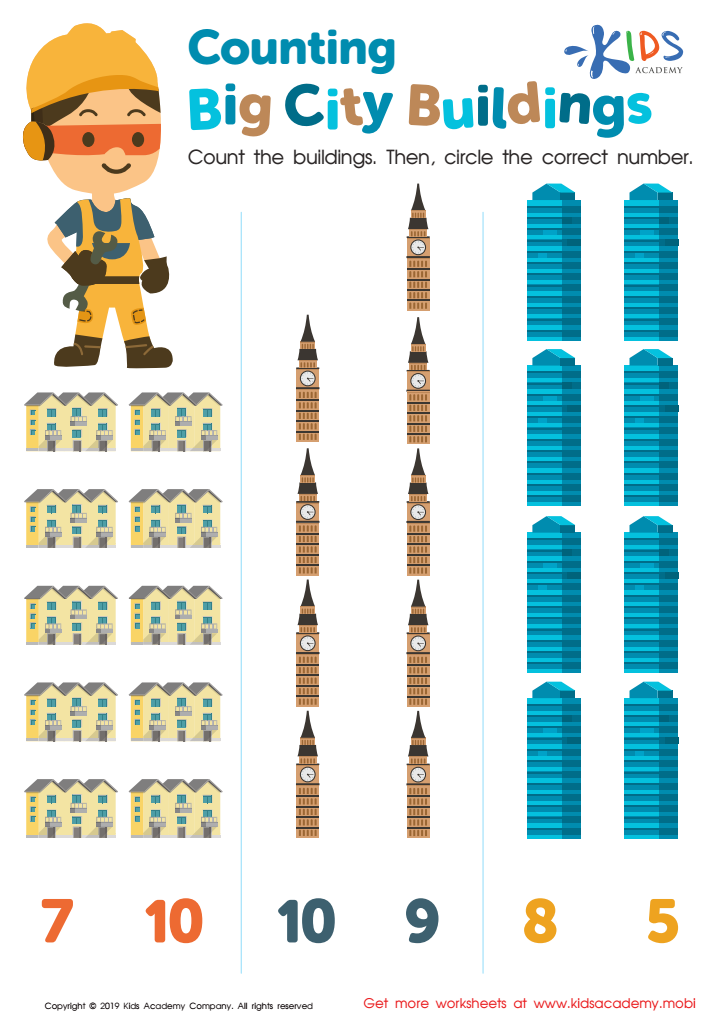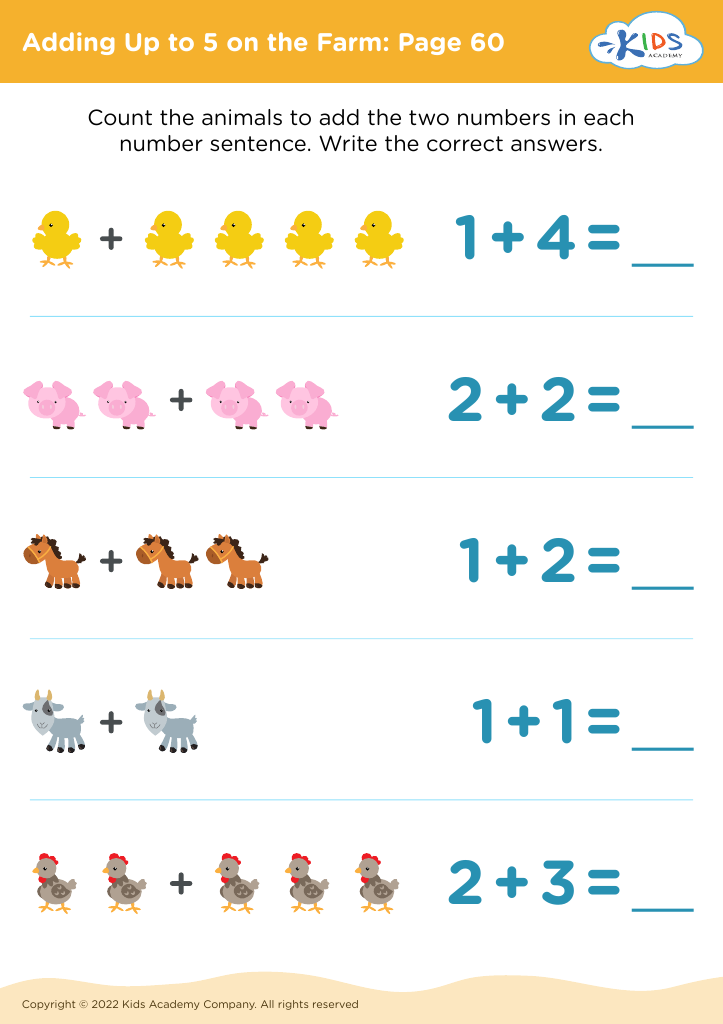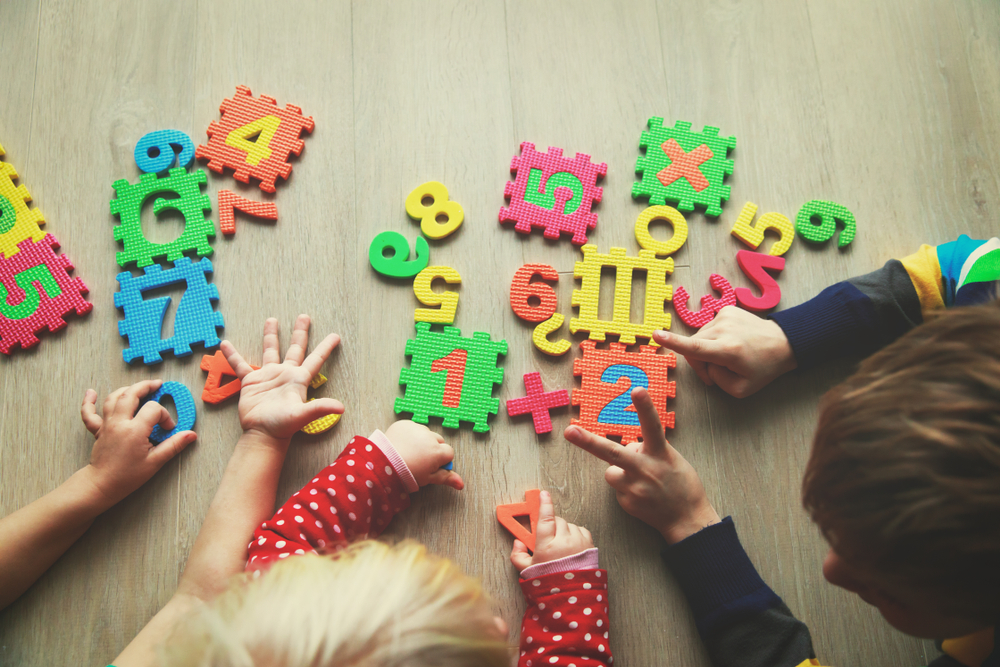Understanding Quantities Math Worksheets for Ages 3-9 - Page 3
50 filtered results
-
From - To


Counting Big City Buildings Worksheet
Understanding quantities is a fundamental cornerstone in early childhood math education for children ages 3-9. It encompasses grasping the size, amount, and value of numbers, which lays the groundwork for more complex mathematical concepts such as addition, subtraction, multiplication, and division. When parents and teachers pay attention to this aspect, they ensure that children develop strong numerical literacy early on.
Quantitative understanding helps children comprehend the world numerically. For example, recognizing that four apples are more than two can aid in everyday decision-making and foster practical life skills. Furthermore, children who grasp quantities can better understand spatial relationships and measurements, which are essential in subjects beyond math, like science and geography.
Moreover, fostering a solid understanding of quantities supports cognitive development. It cultivates logical reasoning, problem-solving skills, and analytical thinking. Engaging with numerical quantities promotes curiosity and confidence, making children more likely to succeed academically across various domains.
Active involvement from parents and teachers by integrating fun, interactive activities that highlight quantities—such as counting games, measuring ingredients while cooking, or comparing blocks—can create a robust and enjoyable learning environment. Therefore, prioritizing this foundational aspect of math educates a child's mind and equips them for future academic challenges while instilling a love for learning.


 Assign to My Students
Assign to My Students



















